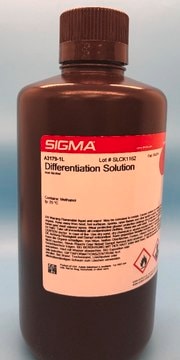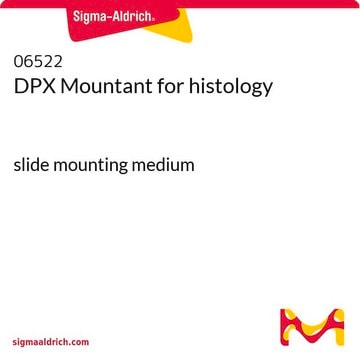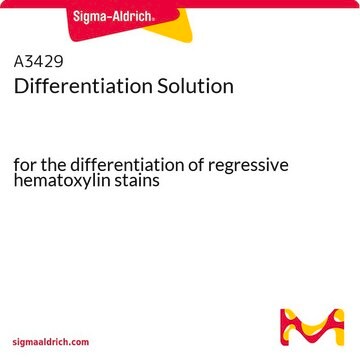Suitable replacements for the deleted Blueing Reagent (65354-85) are S5134 and 106329. Scott's Tap Water Concentrate is diluted 1 to 10 before use. 106329 is typically dissolved in water at a concentration of 15 grams per liter. It is also possible to use a 0.2% solution of ammonium hydroxide or a saturated solution of lithium carbonate.
S5134
Scott′s Tap Water Substitute Concentrate
10 ×
About This Item
Produtos recomendados
Formulário
powder
Nível de qualidade
IVD
for in vitro diagnostic use
concentração
10 ×
técnica(s)
titration: suitable
pH
7.0-7.8
aplicação(ões)
hematology
histology
temperatura de armazenamento
room temp
Categorias relacionadas
Aplicação
Outras notas
Nota de preparo
Palavra indicadora
Warning
Frases de perigo
Declarações de precaução
Classificações de perigo
Aquatic Chronic 2 - Eye Irrit. 2 - Skin Irrit. 2 - Skin Sens. 1
Código de classe de armazenamento
10 - Combustible liquids
Classe de risco de água (WGK)
WGK 3
Equipamento de proteção individual
dust mask type N95 (US), Eyeshields, Gloves
Escolha uma das versões mais recentes:
Já possui este produto?
Encontre a documentação dos produtos que você adquiriu recentemente na biblioteca de documentos.
-
Product 65354-85 has been deleted. What is a suitable replacement product?
1 answer-
Helpful?
-
-
Is there a direct replacement for S5134 Scott's Tap Water Substitute?
1 answer-
There is no direct replacement for the product in question. However, a solution with 15 grams of sodium bicarbonate per liter of water serves exactly the
Helpful?
-
-
Must Scott's Tap Water Substitute be diluted with deionized water, and must the solution be prepared fresh for each day?
1 answer-
The Scott's Tap Water Substitute Concentrate should be diluted with deionized water. When using distilled water, it is advisable to check the pH after preparing the 1X solution. Alternatively, the solution prepared with distilled water can be used to blue tissue sections after staining with hematoxylin. If the nuclei do not turn blue, it may indicate that the pH of the solution is not alkaline enough to convert the nuclei color to blue.
Helpful?
-
Active Filters
Nossa equipe de cientistas tem experiência em todas as áreas de pesquisa, incluindo Life Sciences, ciência de materiais, síntese química, cromatografia, química analítica e muitas outras.
Entre em contato com a assistência técnica









